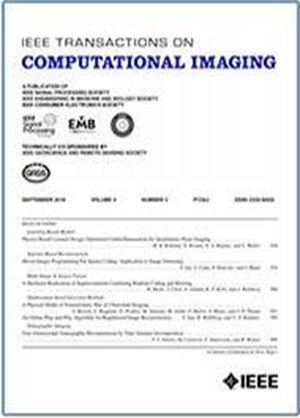MAFDE-Net: Multipath Attention-Fusion-Based Dual-Encoder Network for Undersampled MRI Segmentation
IF 4.8
2区 计算机科学
Q2 ENGINEERING, ELECTRICAL & ELECTRONIC
引用次数: 0
Abstract
Magnetic Resonance Imaging (MRI) plays a crucial role in medical diagnosis, but previous studies have mainly relied on fully-sampled magnitude images for segmentation. However, prolonged k-space acquisition may cause discomfort and motion artifacts in patients, and undersampling techniques are commonly used to address these issues. Conventional methods often adopt a strategy of first reconstructing and then segmenting, but this approach neglects the influence of reconstruction on the downstream segmentation task. In view of this, integrating undersampled MRI reconstruction with segmentation and improving undersampled segmentation performance via joint training has emerged as a promising strategy. Therefore, we propose a novel network, MAFDE-Net, that integrates reconstruction and segmentation into a unified framework. The network enhances undersampled MRI segmentation performance through a joint learning mechanism. The proposed framework integrates the R2N branch containing four Res2Net modules, the CNN-Transformer (CT) branch, and the Multipath Attention-Fusion (MAF) module synergistically combining features from both branches. In addition, we include an Inverted Residual (IR) module in the decoder stage to effectively integrate features extracted during the encoding stage. The Dynamic Upsampling (DU) module is introduced to enhance the final upsampling quality. Simulation experiments show that the undersampled segmentation performance of MAFDE-Net on three datasets significantly outperforms the joint model (RecSeg) and seven baseline models (considering reconstruction and segmentation as serial tasks). Additionally, the joint learning mechanism adopted by MAFDE-Net is not limited to undersampling scenarios; it also outperforms single-task models in fully-sampled MRI segmentation tasks, expanding its application scenarios and potential impact.mde - net:基于多路径注意融合的欠采样MRI分割双编码器网络
磁共振成像(MRI)在医学诊断中起着至关重要的作用,但以往的研究主要依赖于全采样幅度图像进行分割。然而,长时间的k空间采集可能会导致患者不适和运动伪影,欠采样技术通常用于解决这些问题。传统的方法通常采用先重建后分割的策略,但这种方法忽略了重建对下游分割任务的影响。因此,将欠采样MRI重建与分割相结合,通过联合训练来提高欠采样分割性能是一种很有前景的策略。因此,我们提出了一种新的网络,MAFDE-Net,它将重建和分割集成到一个统一的框架中。该网络通过联合学习机制增强了欠采样MRI分割性能。该框架集成了包含四个Res2Net模块的R2N分支、CNN-Transformer (CT)分支和多路径注意力融合(MAF)模块,这些模块协同结合了两个分支的特征。此外,我们在解码器阶段包括一个倒残差(IR)模块,以有效地整合在编码阶段提取的特征。为了提高最终的上采样质量,引入了动态上采样(DU)模块。仿真实验表明,MAFDE-Net在三个数据集上的欠采样分割性能明显优于联合模型(RecSeg)和七个基线模型(将重建和分割作为串行任务)。此外,MAFDE-Net采用的联合学习机制并不局限于欠采样场景;它在全采样MRI分割任务中也优于单任务模型,扩展了其应用场景和潜在影响。
本文章由计算机程序翻译,如有差异,请以英文原文为准。
求助全文
约1分钟内获得全文
求助全文
来源期刊

IEEE Transactions on Computational Imaging
Mathematics-Computational Mathematics
CiteScore
8.20
自引率
7.40%
发文量
59
期刊介绍:
The IEEE Transactions on Computational Imaging will publish articles where computation plays an integral role in the image formation process. Papers will cover all areas of computational imaging ranging from fundamental theoretical methods to the latest innovative computational imaging system designs. Topics of interest will include advanced algorithms and mathematical techniques, model-based data inversion, methods for image and signal recovery from sparse and incomplete data, techniques for non-traditional sensing of image data, methods for dynamic information acquisition and extraction from imaging sensors, software and hardware for efficient computation in imaging systems, and highly novel imaging system design.
 求助内容:
求助内容: 应助结果提醒方式:
应助结果提醒方式:


